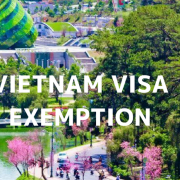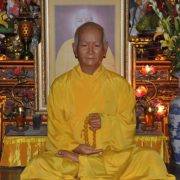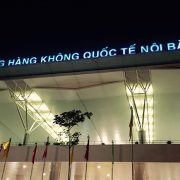Vietnam visa exemption – Are you in the list?
Vietnam visa is very important for foreigners wishing to visit Vietnam but do all foreigners need to have Vietnam visa to enter the country? There are some Vietnam visa exemption cases that you should know. Let’s find out together!
Basically, most foreigners wanting to travel to Vietnam must obtain Vietnam visa to enter and exit the country. However, if you are a citizen of the country having visa exemption agreement with Vietnam, you can stay in Vietnam without a visa for a certain period of time. Check the information below to know whether your country is in exemption list and how long you can be in the country with visa-free.
1. A 90-day Vietnam visa exemption:
- Diplomatic or official passport: Armenia, Algeria, Argentina, Bangladesh, Brazil, Bulgaria, Chile, Colombia, Dominican, Ecuador, Egypt, El Salvador, France, Hungary, India, Iraq, Israel, Japan, South Korea, Malta, Mexico, Moldova, Mongolia, Montenegro, Morocco, Mozambique, Pakistan, Panama, Paraguay, Peru, Russia, Serbia, Seychelles, Singapore, Slovak, Slovenia, South Africa, Spain, Sri Lanka, Sudan, Tanzania, Tunisia, Turkey, Ukraine, UAE, Uruguay, Venezuela.
- Ordinary passport: Chile
2. A 60-day Vietnam visa exemption:
- Diplomatic or official passport: Uzbekistan
3. A 30- Vietnam visa exemption:
- Diplomatic or official passport: Angola, Azerbaijan, China, Croatia, Kazakhstan, Afghanistan, Albania, Belarus, Cuba, North Korea, Nicaragua, Romania
- Ordinary passport: Laos, Cambodia, Thailand, Malaysia, Indonesia, Singapore, and all foreigners who directly travel to Phu Quoc Island and leave Vietnam right after the visitation of this destination.
Note: If the citizens in this list having ordinary passport wish to return Vietnam under visa exemption program again, that visitation must be after 30 days from the latest visit.
4. A 21-day Vietnam visa exemption for ordinary passport holders only:
- The Philippines
5. A 15-day Vietnam visa exemption for ordinary passport holders only:
- Japan
- South Korea
- Sweden
- Denmark
- Finland
- Norway
- Russia
6. A 15-day Vietnam visa exemption for ordinary passport holders only:
- until June 30th, 2018: United Kingdom, France, Germany, Spain, Italy
- from July 1st, 2015 to June 30th, 2020: Belarus
7. A 14-day Vietnam visa exemption for ordinary passport holders only:
- Brunei
- Myanmar
For foreigners whose country is not on this list and those in the list wanting to stay in Vietnam more than visa exemption day, a Vietnam visa will be a must. There are 3 possible legal ways to get Vietnam visa including:
a. Vietnam visa through Vietnam Embassy
If you apply for Vietnam visa at Vietnam Embassy, it will take you 4-5 working days for the Embassy to process and issue Vietnam visa which is stick in original passport. For detail information, please contact the nearest Vietnam Embassy or Consulate.
b. Vietnam Visa on arrival
Vietnam visa on arrival is applicable for those who visit Vietnam by air only. All you need is an Internet connected device to apply online, make payment online to get Approval letter via email first. Then bring the letter in along with Vietnam entry and exit form, passport-sized photo and cash to get visa stamped at Vietnam arrival airport.
c. Vietnam e-visa
Vietnam e-visa is only for those who need one-single entry visa with vacation purpose and their stay is no more than 30 days. It is also a new kind of visa so please check with your airlines first to make sure everything is smooth.
Vietnam visa exemption policy is quite convenient for you if you plan to stay in Vietnam within the exemption days. If you have any question about Vietnam visa exemption or Vietnam visa, please freely to contact Vietnam visa experts!







